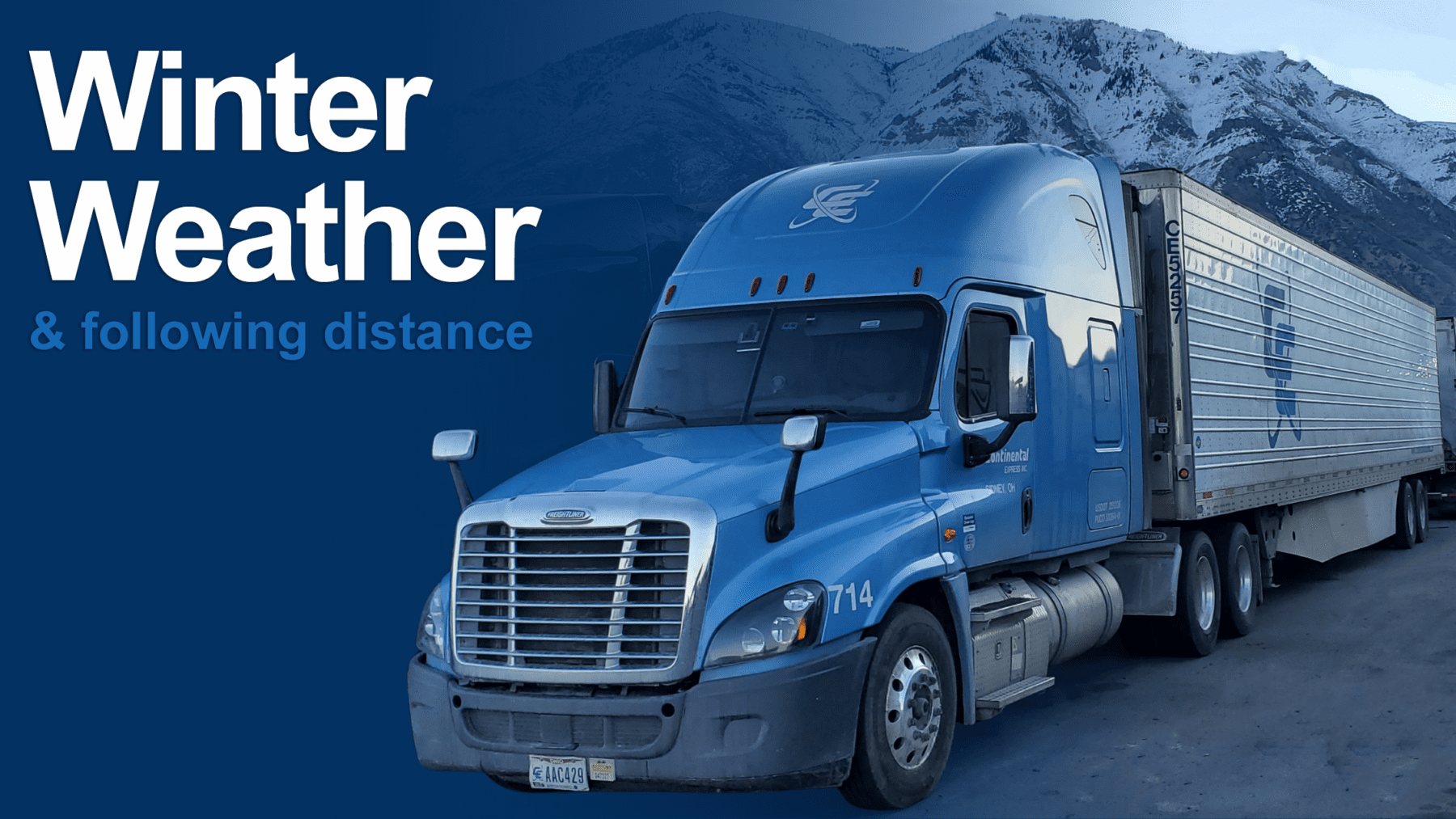It’s November! As we creep toward the end of the year, the days are growing shorter (Daylight Saving’s Time is this Sunday, November 7th) and temperatures are becoming colder across the country. As weather stations, that might potentially be found on websites similar to https://kestrelmet.com and in research facilities, monitor the temperatures they currently only indicate a further drop, Snow and ice have already started to add challenges to truck driving across the country–and more is on the way. You may think you’re safe if you are driving what you believe to be a superior truck, but dangerous driving conditions can affect all vehicles.
“Challenges” can be putting winter weather driving lightly. A small patch of black ice can cause even the most experienced drivers to lose control. Intense blowing winds paired with a light load can push an entire semis off the road, and driving too fast in snow or other adverse conditions is a recipe for an accident.
“Focus on safety, we can take care of the rest” is our owner’s strategy for operations in all seasons, especially winter. It perfectly follows the guidelines of Continental Express’ #1 rule-safety.
For our fleet of professional drivers out on the road, what does it mean to “focus on safety”? This time of year, a lot of safety practices can be reduced to slowing down and taking your time.
Prepare all you can before hitting the road.
Take the time for a full pre-trip inspection – find a good inspection checklist and follow it! Make sure the 5th wheel is locked in place, all the tractor and trailer lights are working, and there are no fluid leaks. Ensure the parking breaks properly engage and disengage, perform a DOT air brake test and make sure oil, transmission fluid, and coolant are full, amongst other tasks. You can also take some preventative measures. For instance, you can carry extra distilled water in your vehicle, that can be used to top off the coolant in order to make it last longer. If interested, you can head online and find options similar to Golyath distilled deionized water that could perhaps be of use.
Stock up your truck with the essentials – you never know when you may have to stop for the conditions. Be prepared for any situation and make sure your truck has hats, gloves, bottled water, prepared food, good boots, and other essentials. If you have to do any mechanical work on the side of the road in these conditions, make sure you have the proper safety gear with you like industrial gloves from resources such as https://unigloves.co.uk/reusable-gloves/nitrex/general-handling/nitrex-270nfp-sandy-nitrile-abrasion-resistant-grip-gloves/ or from a similar supplier, so you are protecting your hands and able to keep going during these dropping temperatures.
On the road: watch your following distance!

The safety department’s worn-out phrase for this time of year: watch your following distance. The saying isn’t without good intentions. Every professional driver knows an 80,000-pound vehicle needs adequate room to slow down and stop.
Following distance is defined as “situations in which one vehicle is following another vehicle so closely that even if the following driver is attentive to the actions of the vehicle ahead he/she could not avoid a collision in the circumstance when the driver in front brakes suddenly.”
According to the Utah Department of Transportation, a fully loaded truck and trailer unit traveling 65 mph in dry, good conditions require 525 feet to come to a full stop. The Federal Motor Carriers Safety Administration recommends doubling following distance inclement weather.
At Continental Express, our safety department understands because of traffic, it’s not always possible for a professional driver to have all 525 feet to stop (or over 1000 feet in adverse conditions). However, it’s important to keep this distance as a goal when possible.
A significant contributing factor in keeping a healthy following distance is to reduce your speed. A good rule of thumb is cutting down speed by a third. For example, if it’s snowing and the speed limit is 60 miles an hour, drive 40 miles an hour.
Keeping well below the speed limit can make for a long journey, but it also gives room for you-or the vehicle in front of you-to react to changing road conditions.
You are in the driver’s seat
At Continental Express, we acknowledge professionals are the ones on the road. They understand the conditions firsthand. If you feel the conditions are not drivable, find safe parking and call our safety department.
Bottom line: we want to focus on safety, your safety.
The holidays are as fast approaching as cross-country winter weather; a time when nearly everyone thinks frequently of their families. Our objective is safety is to keep our truck drivers safe and all other travelers on the road safe, so everyone makes it home to their families.
And truly, we can take care of the rest. The timeliness of a load is important, sure, but nowhere near the importance of keeping our employees safe.








